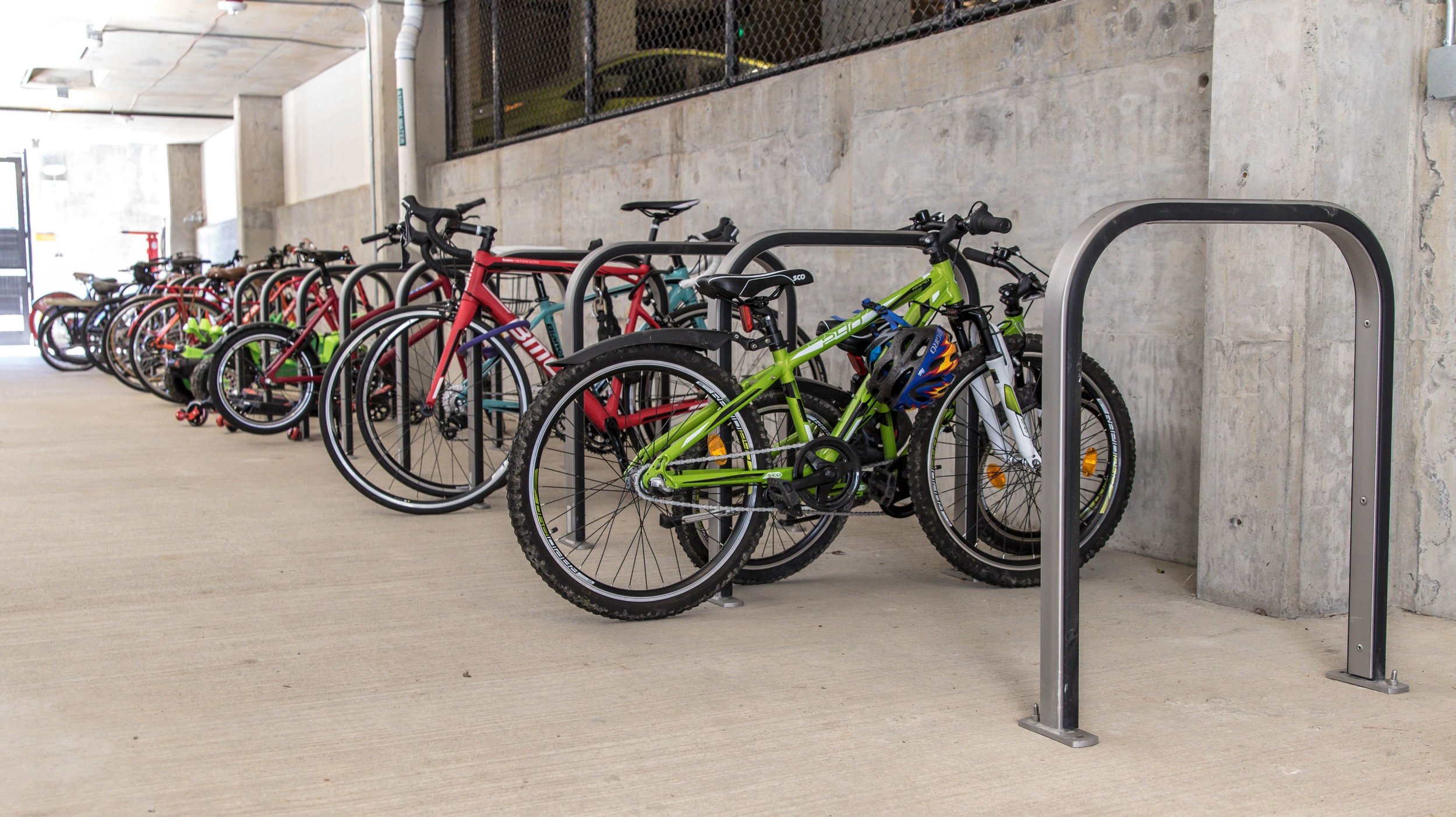Placemaking for the First and Last Mile
A key consideration of placemaking is transportation. To optimize access, it is important to consider how people will arrive at the destination when designing any public or private. Over the past several years, the public transportation sector has been focused on the “first and last mile”. This refers to the beginning and ending parts of a journey that are not served by public transportation – whereby transit riders must walk, cycle, or use ride-share services to travel from their destination to a bus or train stop. Cities are making the effort to become more bicycle-friendly across America, so what is the key to planning for this growing need for environmentally friendly, active transportation?
As personal bicycle ownership raises, a top priority is to plan for bike parking. Designing and manufacturing solutions to seamlessly use public transit, and personal bicycles for the first and last mile has been the goal of Sportworks since its inception. For over 30 years, we’ve developed innovative, functional, and thoughtful designs for transporting bicycles on public transit vehicles. As a robust team of designers, and engineers that happen to be avid and novice cyclists, we understand that commuters also need a secure place to store their bikes when they reach their destination.
Bike Parking
Whether a commuter decides to park their bike at a bus or train stop, or at their final destination – the desire is to create an integrated and thoughtful system, designed specifically with users’ needs in mind. There should be ample spaces for a variety of users and a variety of bicycle types. Some questions you may want to ask as you approach the design and specification of bike racks are:
Are the bike racks easily identifiable as bike parking? It sounds simple enough, but if it doesn’t look like a bike rack, it isn’t likely to be utilized correctly, or perhaps used at all – which can lead to crowding, and blocked sidewalks and pathways.
Should ADA compliance be considered? If bike parking will be installed in circulation paths and walkways, be sure to select a rack that is compliant with ADA Accessibility Standards for protruding objects in circulation paths.
Can the rack accommodate and secure a wide variety of bikes, including e-bikes, cargo bikes, scooters, etc.? A horizontal U-rack with a crossbar will allow most bikes and scooters to be secured with the recommended U-lock.
How will the material hold up over time? Consider stainless steel’s long-lasting reliability and appearance. If your client prefers their bike rack to be a specific color to match branding standards, select one with a no scratch bumper. This will provide protection for bikes and will keep the rack free of dents, chips, and rust.
Lastly, consider sustainability throughout the project. Encouraging active mobility and public transportation is a great step toward environmental focus. But don’t stop there. Be sure that the source, manufacturing location, and content of the bike parking solution also meet your eco-friendly objectives. The International Living Future Institute has an online directory to help locate healthy products for your next project.
The Journey
Sportworks’ first transit bus bike rack was built in Seattle in 1993, paving the way as the first product in the industry to meet the needs of both bicycle riders and transit operators. Over the next few years, the Sportworks Bike-Rack-for-Buses™ gained acceptance across America. In the early 2000s, Sportworks expanded its manufacturing capabilities and launched a complete line of interior and exterior bike parking solutions.
Today, Sportworks bike racks for buses and railcars are preferred by cyclists and transit operators, transporting more than two million bikes per month worldwide. Our experience and history uniquely qualify us as the only fully vertically-integrated manufacturer of USA-made bike transport and parking solutions. With in-house design and manufacturing near Seattle, Sportworks meets the needs of private and public applications supporting sustainability, with usability and quality as guiding design principles.
Not Just Racks – Comprehensive Solutions
As planning continues to evolve into a people-focused design that factors in all aspects of a place, including transportation access, an efficient network can be realized that promotes active mobility - while simultaneously reducing costs, congestion, and environmental impacts associated with traditional commuting. Planning for the first and last mile has many advantages both now – and long term.
Learn more about Sportworks and how we can help you serve the community through beautifully aesthetic, highly functional bike parking and transport solutions.




